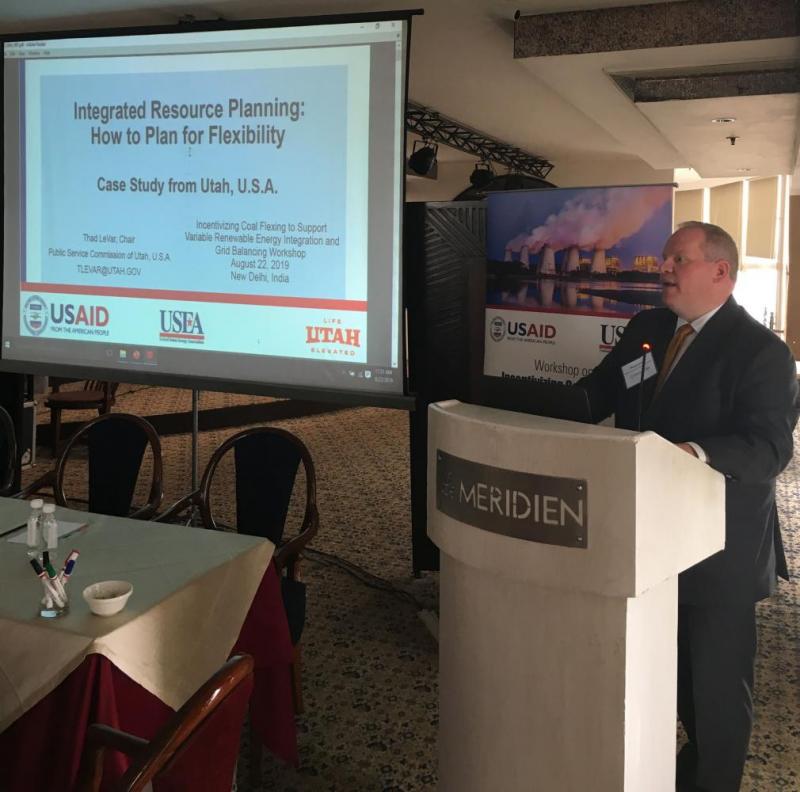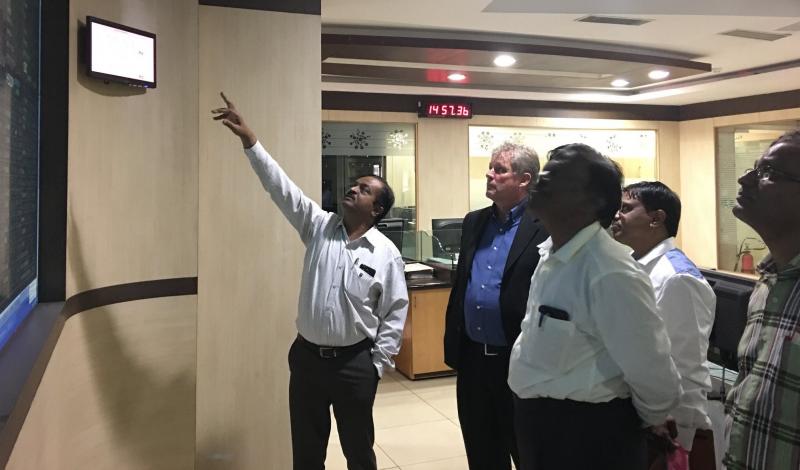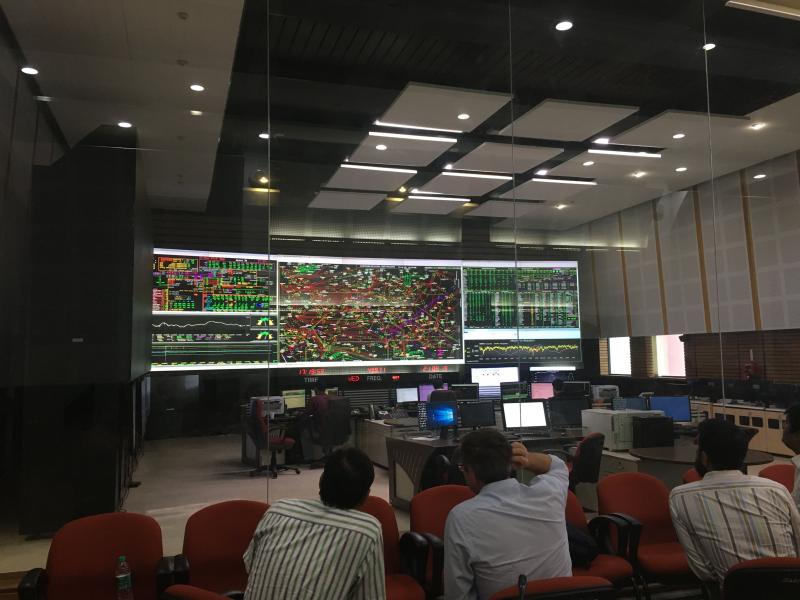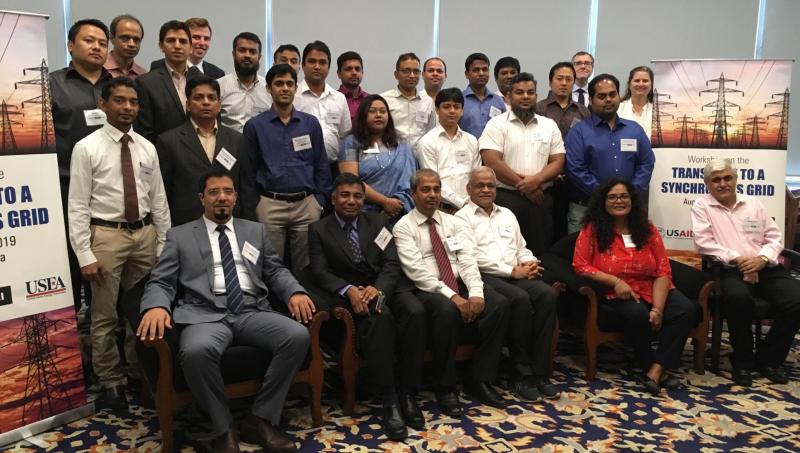India

USEA’s Energy Utility Partnership Program has been active in the Indian power sector since 1996. EUPP began working in the state of Andhra Pradesh, working with the local utility on unbundling and with the electricity regulatory commission on how to structure the commission and tariff setting. Success in Andhra Pradesh led to more partnerships with other distribution and regulatory commissions and eventually with the transmission company PowerGrid, the national generation utility NTPC, and the newly formed Power Trading Corporation. USEA also received money from the U.S. Department of State for the Asia Pacific Partnership (APP) that focused on renewable energy integration in India and led to the creation of the "Handbook on Best Practices for the Successful Deployment of Grid-Connected Renewable Energy, Distributed Generation, Cogeneration and Combined Heat and Power in India."
Over the past 30+ years, EUPP has seen tremendous advances and maturity in India’s power sector, including the fact that some of the organizations that we helped train, such as CERC, PTC, IEX, Tata Power, and more, are now helping us to train other USAID partner countries.
Distribution Network Design Changes to Decrease Technical Losses
Tata Power Delhi Distribution Limited (TPDDL), previously known as North Delhi Power Limited (NDPL), shared their concepts of “Ideal Zones” -- small zones in the TPPDL service area that would be upgraded as part of a system wide overhaul with their partner, Baltimore Gas & Electric (BGE). These zones were selected based on load growth and capacity to improve the system and included commercial, government, and residential areas. TPPDL and BGE reviewed the Ideal Zones design plans and concluded that the TPPDL distribution system needed to install fuses before the primary transformers and on the outgoing overhead line or by incorporating switches.
Creation of TPDDL Training Center
After an exchange to the Tacoma Power training center, TPDDL successfully lobbied the government for money to build a training center, the Center for Power Efficiency in Distribution, using information such as suggested curriculum, training center design, and diagrams proved by Tacoma Power. USEA now uses trainers from TPPDL and the training center to train others, notably the Ethiopian Electric Utility.
Greening the Grid/India
USAID/India’s Greening the Grid (GTG) is a five-year program implemented in partnership with India’s Ministry of Power (MOP) under the U.S.-India Partnership to Advance Clean Energy Deployment (PACE-D). GTG aims to support the Government of India’s (GOI) efforts to manage large-scale integration of large renewable energy (RE) into the grid. Under the Greening the Grid/India program, USEA has carried out several activities on improved understanding of coal-based flexible power generation sources and ancillary services, to support the transmission of energy from generation resources (including VRE) to consumers. Activities focused on applicable models to weigh the benefits arising out of the investments required to be made in the power plants for flexing operations. In countries such as India with high coal dependence but ambitious goals for integration of variable renewable energy, “hourly ramping” and “daily cycling” of coal power plants is becoming an increasing operational necessity. The partnership program aims at enabling power plant operators and engineers to gain from experiences from plants/utilities having successfully tried and adopted means of flexible power plant operations. The activities targeted at executives from India’s Gujarat State Electricity Corporation Ltd. (GSECL) and NTPC India Ltd., as part of a Partnership Program on Coal Flexing to Support Variable Renewable Energy.
GTG/India also provided training on battery energy storage systems for grid application for executives from Power System Operation Corporation Ltd. (POSOCO), the Central Energy Authority (CEA), state load dispatch centers (SLDCs). The training provided lessons the most current battery energy storage technology for India’s potential integration of BESS onto the grid.
Greening the Grid/India
USEA implements activities to support the GTG program through capacity building of national, regional and state load dispatch centers’ system operators and other stakeholders. USEA’s activities focus on sharing transmission system operation and planning best practices for large-scale variable renewable energy (VRE) integration into the power grid. USEA’s activities aim to improve the capacity of Indian system operators on the national, regional and state levels to handle the variability, uncertainty, and challenges specific to large volumes of RE resources on the grid.
USEA involves experts and resource persons from key organizations that are addressing the operational and planning challenges associated with VRE integration. In addition to system operators, these may include conventional generators, reliability organizations, regional planning/coordinating agencies, regulators, technology providers, and distribution utilities. In doing so, USEA engages experts and resources from key organizations currently dealing with the challenges associated with increasing the flexibility of coal generation.
The USEA GTG work accomplishes its objective of mobilizing relevant technical capacity for system operators for large-scale RE integration through focus on international best practices, technical approaches, regulatory mechanisms, market design, technical standards, data requirements, etc. Capacity building for the system operators has focused to date on the following areas:
- Forecasting and Scheduling
- Ancillary Services
- Markets
- Frequency control
- Infrastructure
- Policy
- System studies
Greening the Grid/India
Through the Greening the Grid program, EUPP helps share best practices to system operators in India through our Market Monitoring Webinar Series. The goal of this series is to develop Indian regulations on wholesale market monitoring and policies to support the development of an independent market monitor.
EUPP is also assisting India by sharing best practices on financial instruments for energy markets through webinars and bootcamps. Financial instruments can be useful for reducing the risks of energy-related investments, thus increasing demand for these kinds of investments, and protecting investors in these markets against extreme price swings that could bankrupt them. The development of a derivatives market in India would therefore increase the number of investors, and thus liquidity, in its energy market. The end goal of these activities is to create an outline of the regulations needed for development of a derivatives exchange in India.
Ancillary services, such as operating reserves, imbalance energy, and frequency regulation, are necessary to support renewable energy integration, particularly the integration of intermittent resources. The increasing penetration and reliance on renewable resources, both in front of and behind the grid, has heightened operational concerns over maintaining system balance. Through a series of webinars that follow on a bootcamp conducted a few years ago, EUPP helped show how ancillary service regulations and practices need to be modified in the face of increased renewables penetration through webinars and study tours. The end goal of this partnership is the formation of a functioning ancillary services market in India.
South Asia Regional Energy Hub (SAREH)
To accelerate the implementation of Asia EDGE in South Asia, USAID/India has tasked the U.S. Energy Association with launching a series of inception activities that will establish a regional energy cooperation platform – the South Asia Regional Energy Hub (SAREH). SAREH will promote the development of economical, reliable and clean energy access across South Asia, while supporting U.S. strategic interests and growing private sector engagement in the Indo-Pacific to create investment opportunities for U.S. companies. SAREH will engage a suite of stakeholders across the region and will coordinate interventions with USAID bilateral and regional missions, other USG agencies supporting the initiative, private sector entities national governments, international donors and financial institutions, and civil society organizations.
South Asia Regional Initiative for Energy Integration (SARI/EI)
USEA has been an implementing partner of USAID’s South Asia regional energy program since 2000. With USEA as the implementer, USAID launched the South Asia Regional Initiative for Energy (SARI/E) program in 2000 covering eight countries of Afghanistan, Bangladesh, Bhutan, India, The Maldives, Nepal, Pakistan and Sri Lanka. The first three phases of the program focused on cross-border energy trade (CBET), energy market formation and regional clean energy development. Phase four, which was completed in September 2018, aimed to further the earlier objectives in advancing regional energy integration and increasing CBET. The SARI/EI program is entering its 5th phase. USEA’s current work supports SARI/EI’s efforts to further the objectives of advancing regional energy integration and increasing CBET.
System Flexibility for Asia (SFA)
The objective of this partnership is to provide capacity building to India and the South and Southeast Asian regions to support system flexibility. The partnership will draw lessons from India to share with other South Asia and Southeast Asia countries, e.g. Philippines, Vietnam, Malaysia, Bangladesh, Pakistan, and others.
The program targets a wide-range of topics that provide potential improvement to grid flexibility, focusing on identifying policies, regulation, technical interventions, methods, and processes that can be replicated. These topics may include, but are not limited to:
- Policies, regulation and other incentives to support flexibility
- Economic analysis of barriers, business models, commercialization, and financing applications (e.g. PPA models that encourage flexibility)
- Market structures – structures that promote and maximize flexibility (e.g. energy imbalance market, ancillary markets)
U.S.-Asia Gas Partnership (AGP)
In 2019, the U.S. Agency for International Development (USAID) launched the U.S.-Asia Gas Partnership (AGP) covering eight countries: Bangladesh, India, Indonesia, Papua New Guinea, Philippines, Sri Lanka, Thailand, and Vietnam. AGP is a public-private partnership between government and industry representatives to optimize the development of secure, reliable, and economic sources of natural gas across the Indo-Pacific.
AGP convenes a diverse set of stakeholders to optimize gas network infrastructure planning through the U.S. Agency for International Development, in collaboration with the U.S. Energy Association and the National Association of Regulatory Utility Commissioners (NARUC), to develop domestic gas markets in Asia. AGP will support strategic planning to promote the development of resilient and least-cost power systems that will continue to meet demand over time.
The objective of the AGP is to share best practices in the development of secure, reliable, and economic sources of natural gas. Practical training and strategic advice targeted at ministries and regulators aims to drive more informed policy and decision-making. With a long-term vision to enable the creation of a regional gas market, the AGP will facilitate a shared understanding between government officials and the private sector about the technical, commercial, and economic factors that spur investment.






